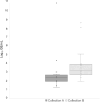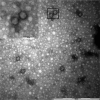Discovery of a human parvovirus B19 analog (Erythroparvovirus) in cats
- PMID: 40113872
- PMCID: PMC11926167
- DOI: 10.1038/s41598-025-94123-w
Discovery of a human parvovirus B19 analog (Erythroparvovirus) in cats
Abstract
Two feral cats (from the same colony) were presented to the veterinary clinic for weakness, weight loss, and anorexia. The cats were part of a study on feline hepatotropic viruses (collection A, 43 animals). On metaviromic investigation, parvoviral reads were identified in the sera of the two cats. The feline parvovirus genome was 5.3 kb long with an organization similar to other members of the Erythroparvovirus genus. In the ORF1 (nonstructural proteins) and ORF2 (VP1/VP2 precursor) the feline virus displayed 43.1% and 49.1% nucleotide identity to human parvovirus B19, and 48.9% and 56.6% to chipmunk parvovirus. Sequence identity to canine/feline protoparvovirus (Protoparvovirus carnivoran 1) was as low as 36.5% % and 29.2% in the ORF1 and ORF2, respectively. Using a quantitative PCR assay, the virus was also identified in an additional ten cats (prevalence 27.6%, 12/43) from collection A and in 15/1150 (1.3%) of archival sera (collection B), revealing a higher infection rate in cats with altered hepatic markers, suggestive of hepatic distress. The findings of our study extend the list of known parvoviruses in the feline host.
Keywords: Cat; Erythroparvovirus; Hepatitis; Sera.
© 2025. The Author(s).
Conflict of interest statement
Declarations. Competing interests: The authors declare no competing interests. Ethics statement: All applicable international, national and institutional guidelines for the care and use of animals were followed. The study is reported in accordance with ARRIVE guidelines ( https://arriveguidelines.org ). The study was approved by the Ethics Committee of the Department of Veterinary Medicine, University of Bari (Authorization 23/2018).
Figures




References
-
- Young, N. S. & Brown, K. E. Parvovirus B19. N. Engl. J. Med.350, 586–597. 10.1056/NEJMra030840 (2004). - PubMed
MeSH terms
Grants and funding
- PRIN 2022 "Investigating Hepatotropic Viruses in carnivores and humans in a One Health perspective" (HVOH) prot. 2022EPP2TT/Ministero dell'Istruzione, dell'Università e della Ricerca
- PRIN 2022 PNRR "Exploring the virome of domestic dogs and cats COVDC (Comprehending virome of domestic carnivores): exploring the viral diversity of domestic carnivores and One Health implications prot. P2022FR49N/Ministero dell'Istruzione, dell'Università e della Ricerca
- RRF-2.3.1-21-2022-00001/National Laboratory for Infectious Animal Diseases, Antimicrobial Resistance, Veterinary Public Health and Food Chain Safety
- RRF-2.3.1-21-2022-00010/National Laboratory of Virology
- NextGeneration EU-MUR PNRR Extended Partnership initiative on Emerging Infectious Diseases (Project no. PE00000007, INF-ACT)/European Union
LinkOut - more resources
Full Text Sources
Miscellaneous

